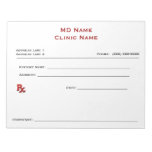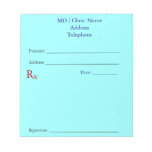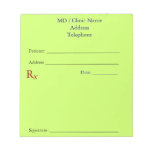However, choosing to accept Medicare isn’t a ‘one and done’ decision. Instead, it requires a thoughtful approach to ensure that practices are paid appropriately, maintain adequate cashflow, and safeguard revenue so auditors don’t try to eventually recoup that money.
Below are six tips for practices that are new to Medicare:
1. Hire a nurse practitioner or physician assistant
The cost-to-revenue ratio is significantly lower when non-physician practitioners (NPP) treat Medicare patients, says Cohen. This means it’s ultimately more profitable when NPPs see these patients. This strategy also allows physicians to fill their schedules with patients whose insurance pays more per relative value unit. This allows the practice to accept and treat Medicare patients without having to drain all of the physician’s time and resources.
2. Be strategic when scheduling patients
For example, set aside a certain number of daily slots for patients with Medicare, Medicaid, and private insurance. Because Medicare often pays the lowest, consider setting strict limitations for the number of Medicare patients seen in a single day or week, says Cohen. Balancing the schedule in this way creates a cashflow equilibrium.
3. File clean claims every time
“Do it right on the front end so you’re not subject to an audit three years down the road,” says Cohen. “Clean claims are the secret to not only making—but keeping—money in this industry.”
Filing clean claims may require physicians to hire a certified medical coder. They’ll also need to budget for that individual’s ongoing continuing education. If the physician can’t afford a certified coder, then it’s best to outsource the coding function to a reputable company, says Cohen.
Here's a checklist to help you decide on your medical billing needs:
4. Establish a compliance plan—and follow it
The Office of Inspector General (OIG) provides guidance for individual and small group physician practices to help them conduct internal monitoring, implement practice standards, develop corrective action and more. Following a documented compliance plan helps physicians stay on track, and it mitigates risk for denials and recoupments, says Cohen.
5. Work with your practice management vendor
Because Medicare’s National Coverage Determinations, Local Coverage Determinations, and National Correct Coding Initiative edits are completely transparent, physicians are most successful when they work with their practice management vendors to ensure that this information is loaded on the front end. This enables practices to validate claims prior to submission. Many systems also offer coding checks that validate procedural codes and modifiers.
It’s difficult to implement this same type of checks and balances with private payers, says Cohen. “The problem with private payers is that there’s still a lot of black box editing that goes on,” he says, adding that he recently had to look 22 pages deep into a payer’s website to find its payment policy.
6. Hire an external auditor annually
Under these self-disclosure and payback policies, the government and private payers are expecting physicians to hire an external auditor, says Cohen. External auditors can easily identify billing and compliance risk that could be potentially catastrophic when left unaddressed, he adds.
Choosing to accept Medicare can help physicians grow their practices, but only when implementing a strategic approach to stay profitable. This includes careful consideration of staffing, scheduling, billing and auditing.





No comments:
Post a Comment